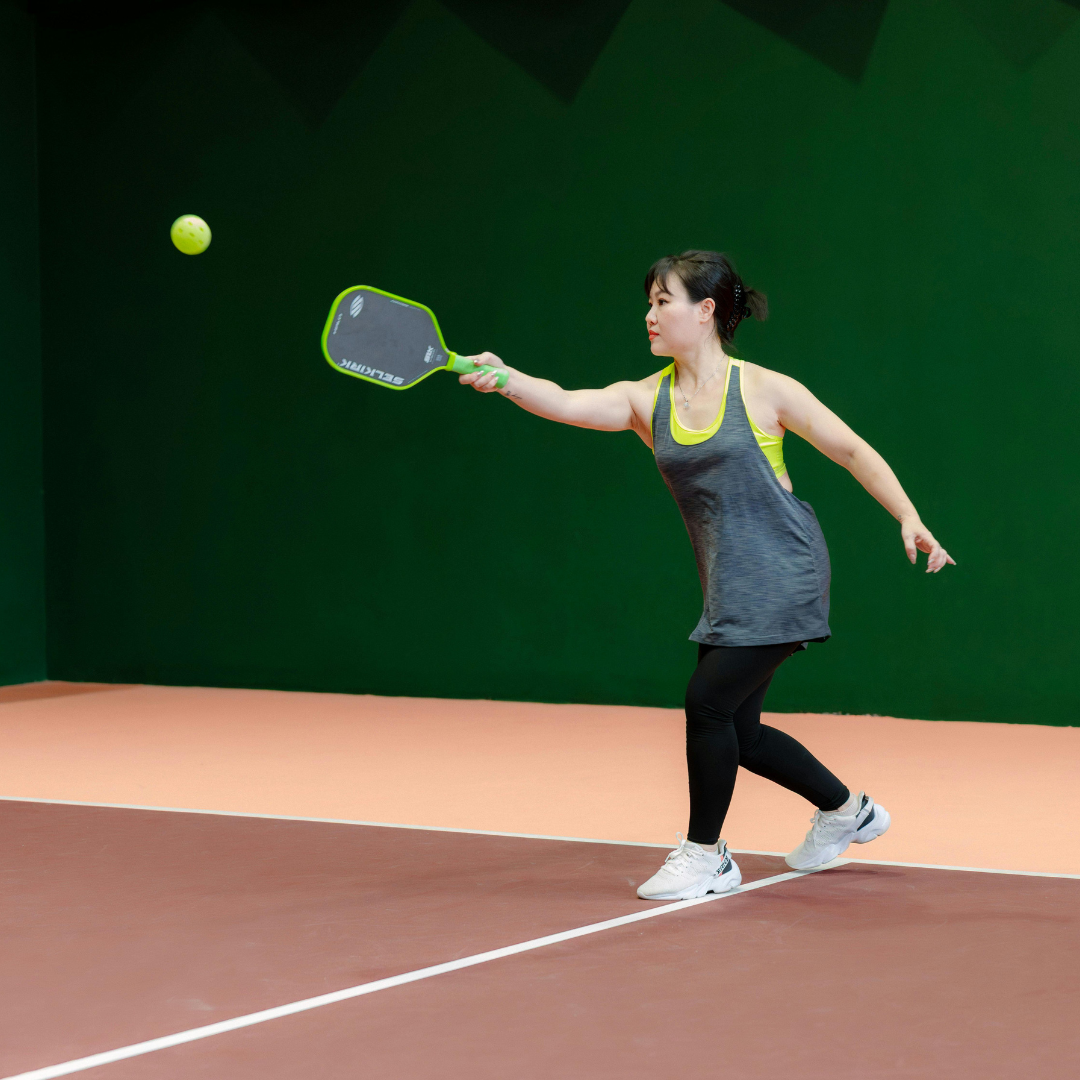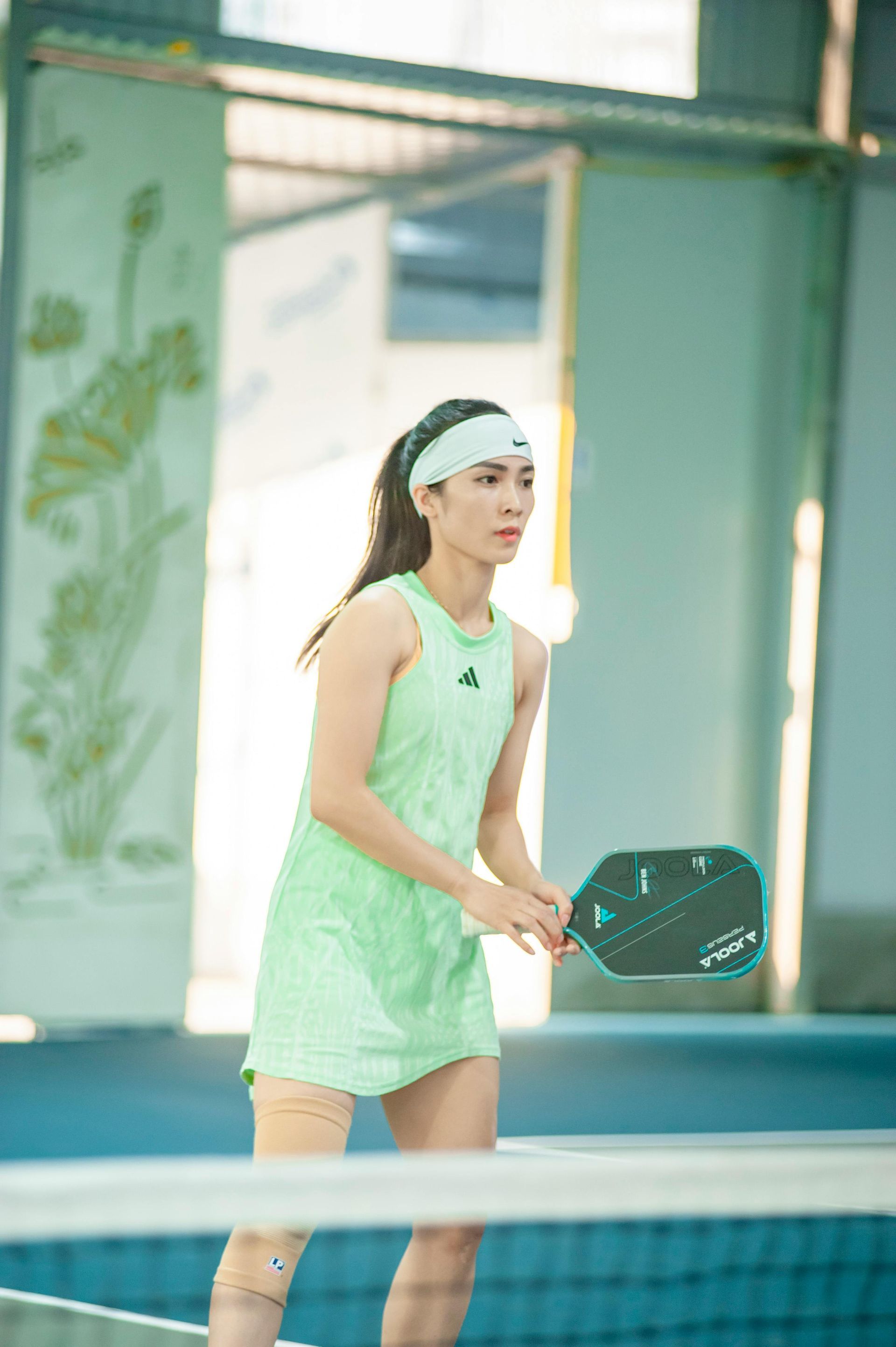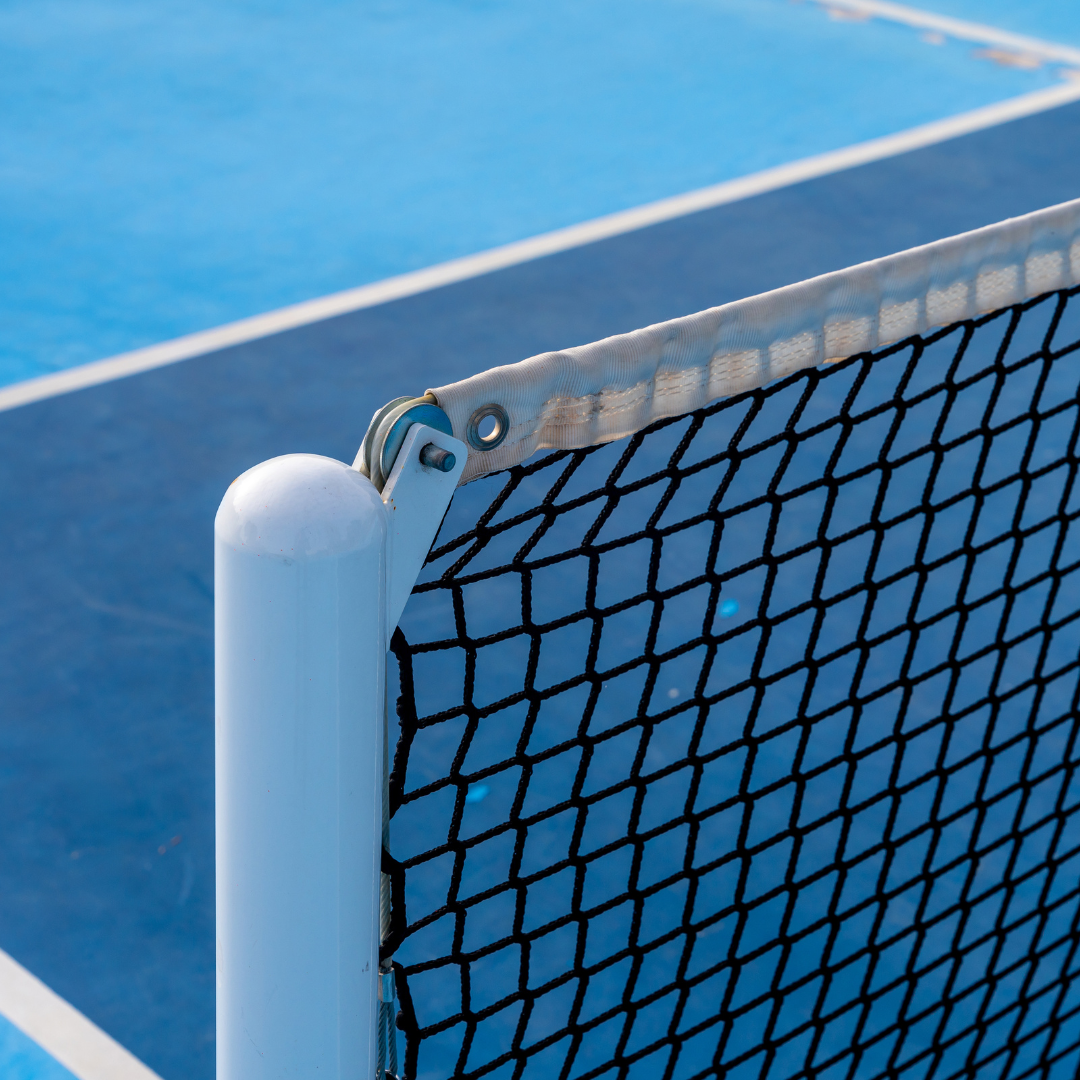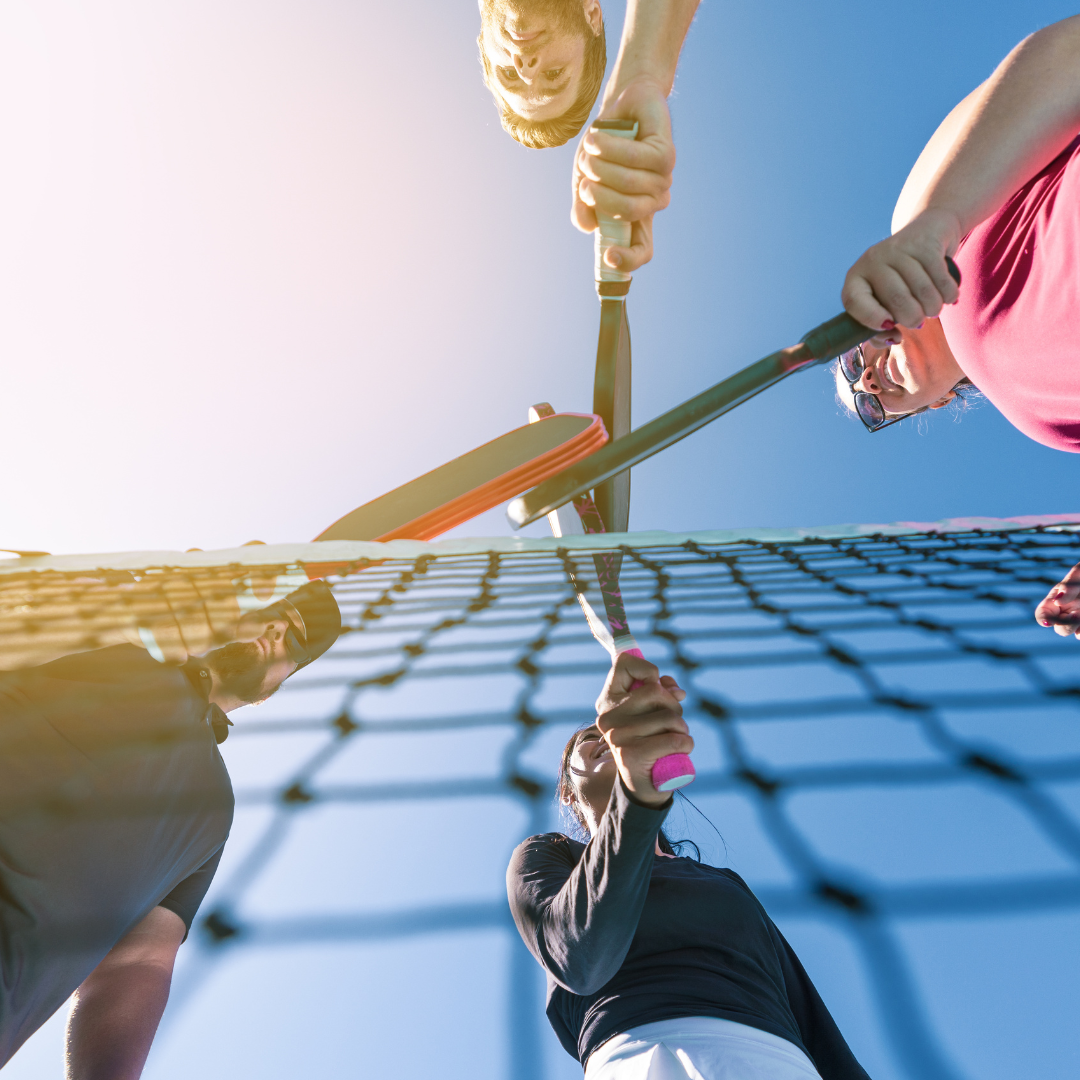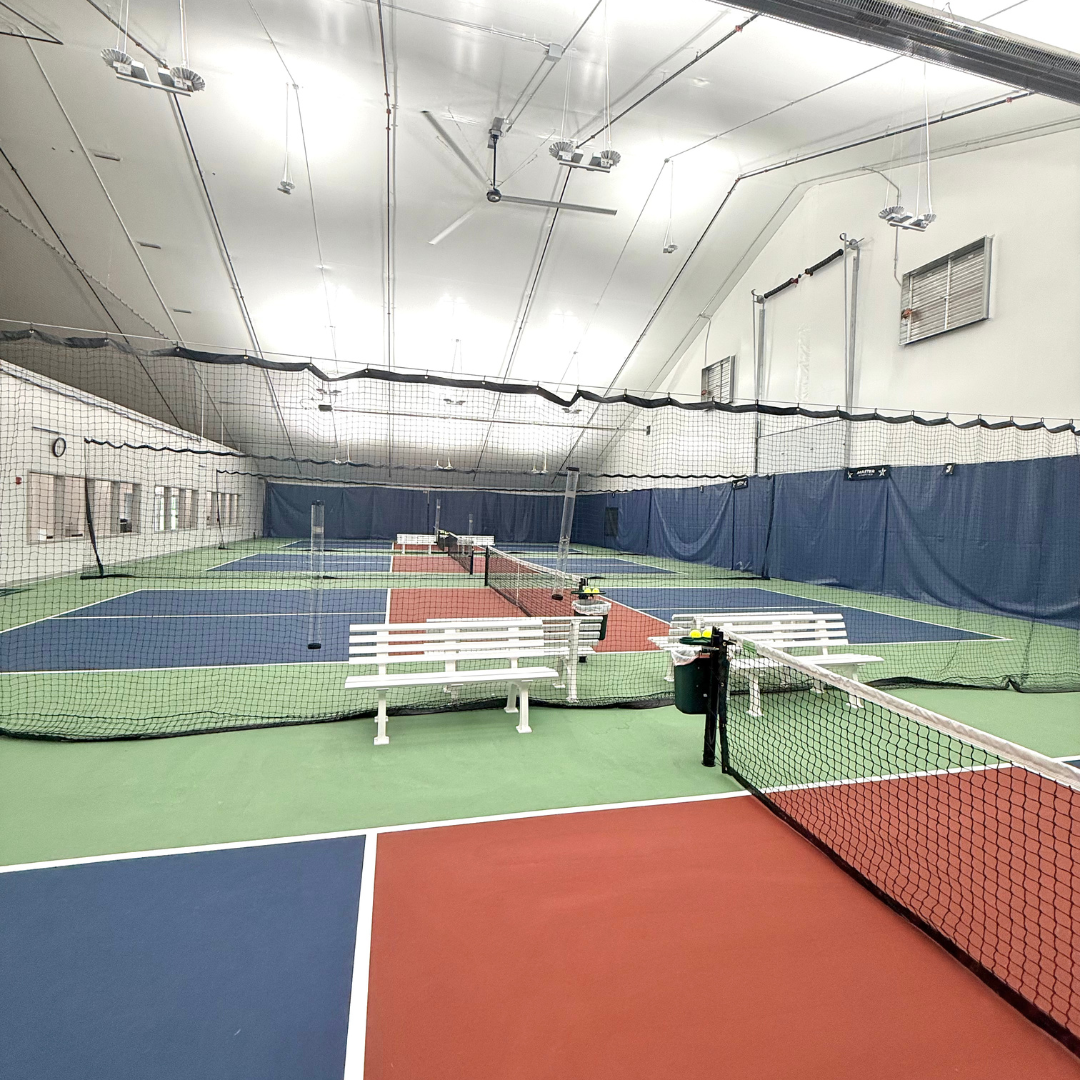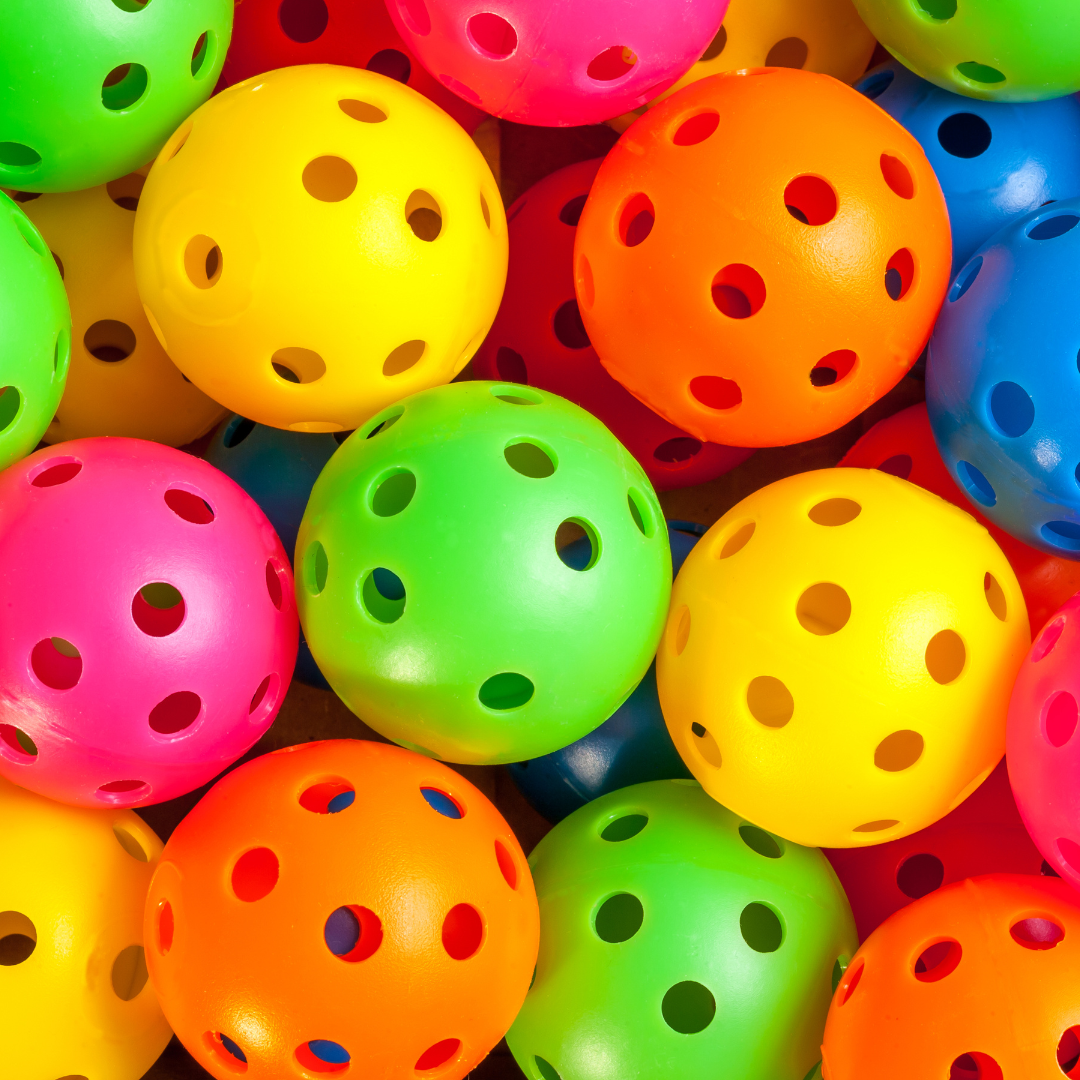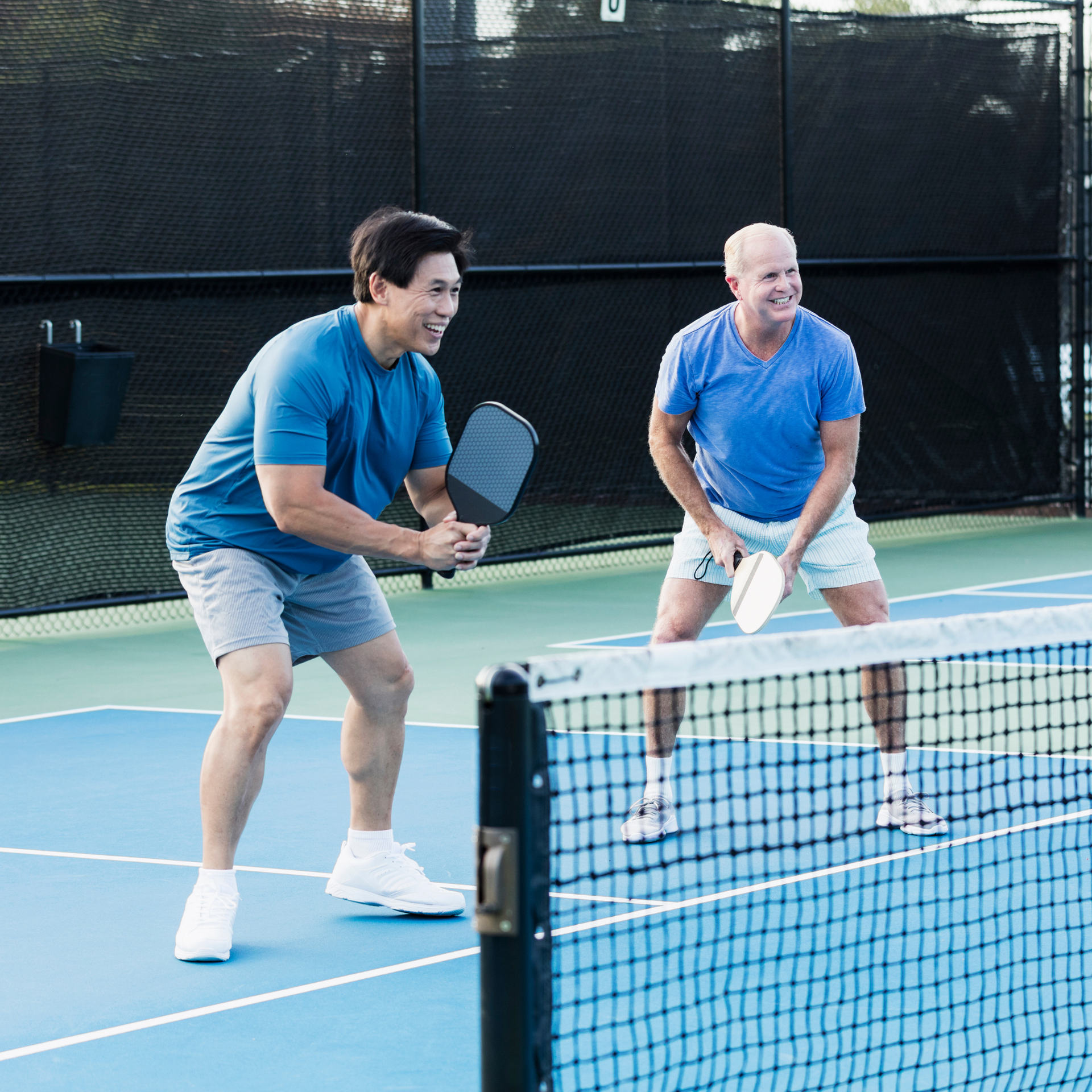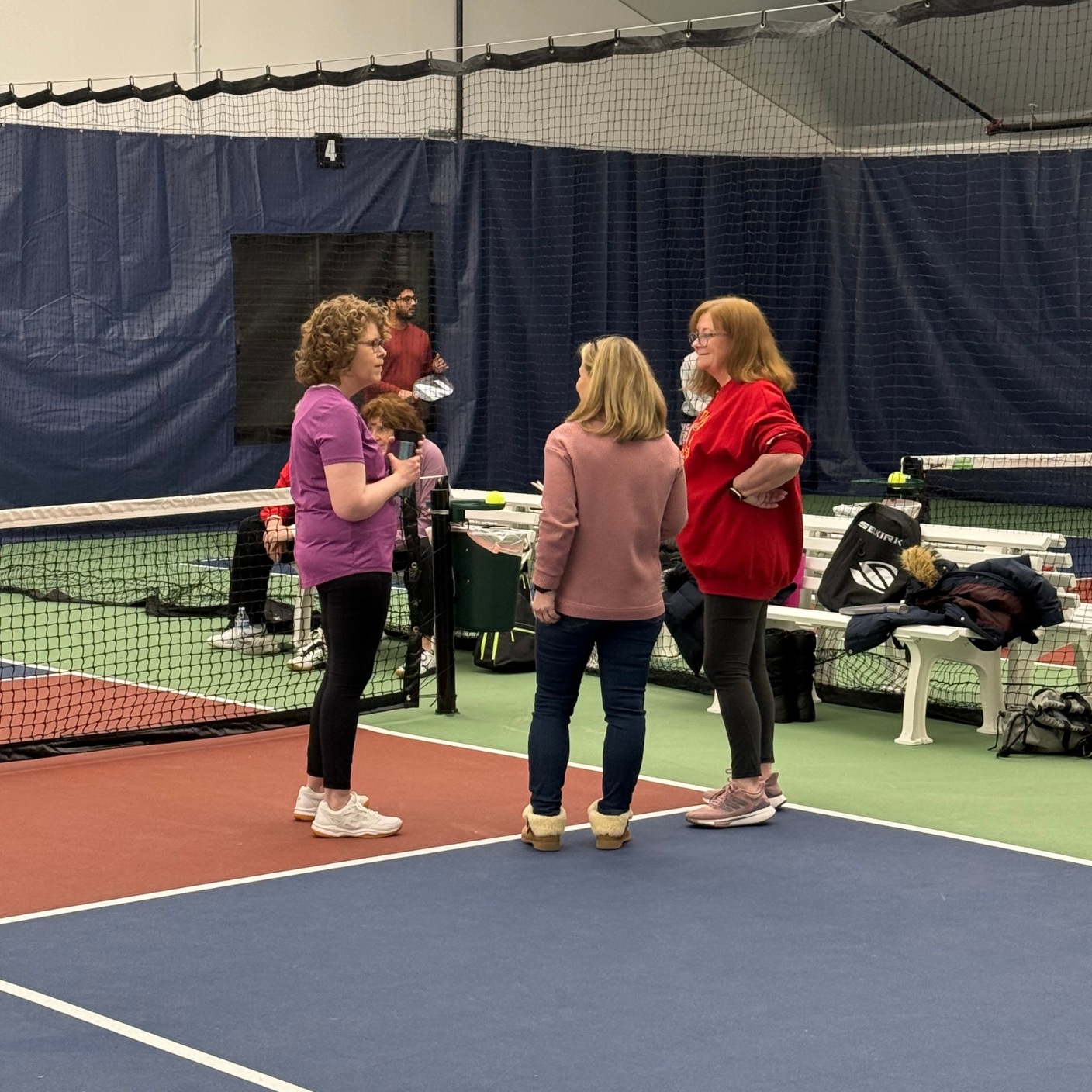Low-Impact Cardio: Why Pickleball Works for Your Joints
Published: November 6, 2025
Pickleball has a reputation for being fun, social, and easy to learn. What often gets overlooked is how joint-friendly it can be when you set yourself up well. Compared to many court sports, pickleball typically involves shorter movement distances, fewer overhead motions, and an underhand serve, all of which can reduce stress on knees, hips, shoulders, and the lower back. This post breaks down why the game feels easier on the body, what movement patterns to focus on, and how to play more—without paying for it later.
Why Pickleball Feels Low Impact
The court is smaller than a tennis court, so you cover less ground between shots. That means fewer long sprints and fewer emergency recovery steps. The ball moves quickly but loses speed faster than a felt tennis ball, which keeps exchanges compact around the non-volley zone (the “kitchen”). Because the serve is underhand and must be struck below the waist, most players avoid repetitive overhead motions that can irritate the shoulder and neck. Doubles is the dominant format, further spreading the physical workload and reducing the total number of high-stress movements per person.
The "Kitchen" Changes How You Move
Much of pickleball happens within a few steps of the kitchen line. Points often develop through controlled dinks and short exchanges instead of long chases. Your body spends more time in an athletic but stable stance—small shuffles, quick resets, and balanced reaches—rather than explosive accelerations. This favors joint-friendly mechanics: soft knees, stacked hips over feet, and a neutral spine while you react. Learn more about the rules of pickleball here.
Underhand Serving and Shoulder Comfort
An overhand motion can be perfectly healthy with good technique, but it demands more from the rotator cuff and upper back. In pickleball, the underhand serve and frequent soft shots at the kitchen reduce the need for overhead swings. When you do attack, the ball height and paddle path still tend to be below shoulder level. Over a session, that can translate into fewer irritated shoulders and less post-play tightness.
Footwork That Protects Knees and Hips
Pickleball rewards short, efficient steps. Think “load low, move small, arrive balanced.” Bend at the ankles and knees to absorb force, keep your hips level as you shuffle, and avoid crossing your feet when you’re close to the net. Because you rarely have to turn and sprint full-speed, the rotational forces on the knee can be lower than in sports that require frequent cutting at high speeds. Shoes matter here: indoor court shoes with a supportive midsole and non-marking outsole improve traction and reduce slip-and-twist moments that stress the joints.
Core and Balance Do More Work Than You Think
Players often feel the legs burn less and the core work more. Stabilizing the trunk as you reach for dinks or reset a fast exchange helps keep pressure off the lumbar spine. A simple rule is to “move the feet to the ball, not the spine.” Take a tiny hop or micro-shuffle to center the ball in front of your body, then use your core like a quiet brace while the paddle does the fine motor work.
Warm up to Move Better, Not Just to Sweat
A good five-minute warm-up pays off more in pickleball than most people expect. Start with ankle rocks and calf pumps to wake up the lower legs, add a few hip openers and gentle body-weight squats, then finish with shoulder circles and light paddle taps. The goal is to prime mobility in the ankles and hips while easing the shoulders into a low-to-mid swing path. After play, spend two minutes on calf and hip-flexor stretches and one minute on gentle forearm stretches—small habits that reduce next-day stiffness.
Technique Tweaks That Keep it Joint-Friendly
If a shot consistently makes your body feel “jammed,” change the setup, not the swing speed. Get closer to the bounce, soften your grip pressure, and meet the ball earlier with a compact motion. Use a continental-style grip or something close to it for quick transitions between forehand and backhand at the kitchen; fewer grip changes means fewer awkward wrist positions. Keep your paddle up in front of your chest between shots so your first move is short and efficient rather than a late, lunging reach.
Managing Volume So You Can Play Tomorrow
Because pickleball is fun and social, it’s easy to overdo it. Cap your first few sessions at 60 minutes, then build by 15 minutes per week as your feet and calves adapt. Rotate partners and formats to vary the workload. If your knees or Achilles feel cranky, shorten rallies by playing more drop-serve and third-shot drop practice instead of endless speed-ups. Recovery is simple: hydrate, do a few calf raises and hip bridges later that day, and sleep.
Who Benefits from the Low-Impact Profile
Beginners, returning athletes, and anyone managing knee, hip, shoulder, or back sensitivities often find pickleball a more approachable path back to regular activity. It provides meaningful cardio with fewer high-velocity sprints and less repetitive overhead work. It’s also a strong option for cross-training: tennis players, runners, and gym athletes can sharpen reflexes and coordination without adding heavy joint stress.
Want to Play in Connecticut?
Ellington Racquet Club is a locally owned, brand-new facility (opened in 2024) offering both pickleball and tennis. The club offers memberships for regular players and is also open to the public for clinics, open play, and court rentals—so you can try pickleball, stick with it, or mix it with tennis as you like.

